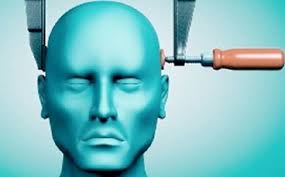El ejercicio de alta intensidad obtuvo mejores resultados para reducir la migraña.

Aerobic exercise training is a promising complementary treatment option in migraine and can reduce migraine days and improve retinal microvascular function. Our aim was to elucidate whether different aerobic exercise programs at high vs moderate intensities distinctly affect migraine days as primary outcome and retinal vessel parameters as a secondary. In this randomized controlled trial, migraine days were recorded by a validated migraine diary in 45 migraineurs of which 36 (female: 28; age: 36 (SD:10)/BMI: 23.1 (5.3) completed the training period (dropout: 20%). Participants were assigned (Strata: age, gender, fitness and migraine symptomatology) to either high intensity interval training (HIT), moderate continuous training (MCT), or a control group (CON). Intervention groups trained twice a week over a 12-week intervention period. Static retinal vessel analysis, central retinal arteriolar (CRAE) and venular (CRVE) diameters, as well as the arteriolar-to-venular diameter ratio (AVR) were obtained for cerebrovascular health assessment. Incremental treadmill testing yielded maximal and submaximal fitness parameters. Overall, moderate migraine day reductions were observed (ηP2 = .12): HIT revealed 89% likely beneficial effects (SMD = 1.05) compared to MCT (SMD = 0.50) and CON (SMD = 0.59). Very large intervention effects on AVR improvement (ηP2 = 0.27), slightly favoring HIT (SMD=-0.43) over CON (SMD=0), were observed. HIT seems more effective for migraine day reduction and improvement of cerebrovascular health compared to MCT. Intermittent exercise programs of higher intensities may need to be considered as an additional treatment option in migraine patients.
 Blog de Fisioterapia Fisioterapia
Blog de Fisioterapia Fisioterapia



